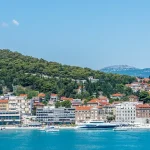The end of an era for Split Zoo.
On Sunday, the Split Zoo on Marjan has been closed for good, with animals going to their new homes. In the City Spatial Plan which is currently being prepared, urban planners still have to find a location for the new zoo, confirmed the deputy mayor of Split Goran Kovačević. A year ago, the Split City Council concluded that the animals should be relocated from Marjan and that a new space for the zoo and an animal shelter should be found, reports Slobodna Dalmacija on November 2, 2015.
“We expect that the final proposal will be delivered to the city councillors by June. That proposal will include the new location for the zoo and the animal shelter. We are trying to find the right locations which are already owned by the city. Animals in Split will never again be held in inappropriate living conditions”, Kovačević said. “We will soon publish a public call to all interested parties to submit their proposals what should take place of the current zoo. All proposals will go to the Split City Council for approval. The condition is that the new proposals must be in accordance with the Law on Protection of Nature and that they must have educational purpose”, the deputy mayor explained.
Interestingly, Culture Strategy of the City of Split lists “Žnjan and/or Duilovo” as areas “for the future local zoo”. Siniša Kuko, head of the City Department of Culture, claims that does not mean that the new Split zoo will necessarily really be built there. “The City Council will make the final decision on the location of the zoo, and the Culture Strategy gives only guidelines and instructions on the preferred location of the future zoo, which city offices can use while determining the future proposals for amendments of the City Spatial Plan”, Kuko explained.
Culture Strategy claims that “the existing zoo will be reconstructed, including the renovation of the building of the Museum of Natural History, and turned into an education centre in line with modern standards, with a smaller number of local animals in authentic dwellings and with the removal of concrete dwelling facilities for wild animals”.








